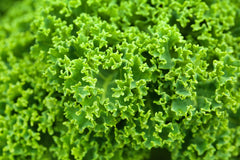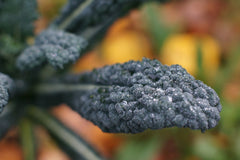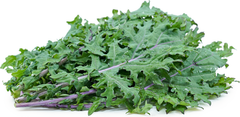Looking to grow kale in aquaponics and enjoy fresh, nutrient-packed leaves year-round? Kale is one of the easiest and most rewarding leafy greens to cultivate in an aquaponics system. Its fast growth, resilience, and continuous harvest potential make it a favorite for both beginners and experienced growers.
But success is not just about planting seeds or adding fish. Healthy kale depends on a balanced aquaponics system, where fish, bacteria, water quality, light, and harvesting techniques all work together. Without understanding the full system, even hardy plants like kale can struggle.
In this aquaponics kale guide, you’ll learn how to:
- Choose the best aquaponics system for your space and skill level
- Start seeds or transplants properly to avoid early setbacks
- Maintain optimal growing conditions for consistent, healthy growth
- Manage nutrients naturally through fish and biofilters
- Identify and fix common kale problems quickly
By the end of this guide, you’ll know how to grow thriving kale in aquaponics and take control of your system.
Why Kale Thrives in Aquaponics Systems
Kale is one of the most reliable and rewarding leafy greens you can grow in an aquaponics system. Whether you’re just getting started or already growing herbs and lettuce, kale offers a unique combination of fast growth, high nutritional value, and forgiving growing requirements, making it a favorite among aquaponics growers.
Unlike fruiting plants that demand precise nutrient ratios, kale thrives on the naturally nitrogen-rich water produced by fish waste. As beneficial bacteria convert ammonia into plant-available nutrients, kale quickly absorbs what it needs, producing deep green leaves and steady growth.
Another reason kale performs so well in aquaponics is its cut-and-come-again nature. Instead of harvesting the entire plant at once, you can remove outer leaves and allow the plant to keep producing for weeks, or even months, under the right conditions. For home growers, this means more food from fewer plants and a consistent harvest schedule.
Kale is also more tolerant than many leafy greens when it comes to small fluctuations in pH and nutrient levels. While it still prefers a stable system, it won’t immediately stall or fail if conditions aren’t perfect, something beginners often appreciate as they’re learning how aquaponics systems really work.
Pros of Growing Kale in Aquaponics
1. Fast, Consistent Growth: Once established, kale grows quickly in aquaponics systems thanks to the steady supply of nutrients from fish waste. Many growers notice faster growth compared to soil-grown kale, especially in mature systems.
2. High Nutrient Demand Matches Aquaponics Perfectly: Kale is a nitrogen-hungry plant, and aquaponics naturally excels at supplying nitrogen through the nitrification process. This makes kale a natural fit, particularly once your system is cycled and stable.
3. Continuous Harvesting: Kale doesn’t need to be harvested all at once. By removing outer leaves and allowing the center to keep growing, you can enjoy ongoing harvests without replanting frequently, ideal for home systems with limited space.
4. More Forgiving Than Many Leafy Greens: Compared to delicate greens like spinach, kale tolerates minor fluctuations in pH, nutrients, and temperature. This makes it a solid choice for growers still learning how to maintain system balance.
Cons of Growing Kale in Aquaponics
1. Sensitive to System Imbalances Over Time: While kale is forgiving, it will eventually show signs of trouble if nutrients are consistently out of balance.
2. Temperature Matters More Than Many Beginners Expect: Kale prefers cooler conditions. In warmer climates or indoor systems without temperature control, growth can slow or leaves may become bitter.
3. Nutrient Deficiencies Can Appear Suddenly: Iron and calcium deficiencies are common in aquaponics-grown kale, especially in new systems.
The Best Aquaponics Systems for Growing Kale
Kale can be grown successfully in several types of aquaponics systems, but not all systems are equally beginner-friendly. Choosing the right setup from the start can make the difference between steady harvests and constant troubleshooting.
Below are the most common aquaponics system types used to grow kale, along with when each one makes the most sense.
1. Media Bed Systems (Best for Beginners)
Media bed systems are one of the most popular choices for growing kale, especially for home and backyard growers.
Why they work well for kale:
- Excellent root support for mature kale plants
- Strong biofiltration built into the grow media
- More forgiving of feeding and nutrient fluctuations
Kale’s larger root system benefits from the depth and stability of a media bed. These systems also handle solids better than other designs, reducing the risk of root issues as plants mature.
Things to watch for:
- Proper flood-and-drain timing
- Avoiding overstocking fish
2. NFT (Nutrient Film Technique) Systems (For Experienced Growers)
NFT systems can produce beautiful kale, but they require precision.
Pros:
- Efficient water use
- Faster growth in controlled environments
Challenges:
- Kale’s roots can clog channels as plants mature
- Power or pump failures can damage crops quickly
- Less room for error with nutrient balance
NFT systems work best for kale when growers already understand flow rates, oxygenation, and nutrient stability. Without that knowledge, problems can appear suddenly.

3. Raft / DWC Systems (Commercial-Style Setups)
Raft systems are commonly used in larger or commercial aquaponics operations.
Why they work:
- Consistent nutrient access
- Even growth across large plant numbers
Limitations for home growers:
- Require strong filtration and oxygenation
- More complex to manage at a small scale
For growers aiming to scale production, raft system can be an excellent option, but it demands a deeper understanding of system design and water quality management.
Which System Should You Choose for Kale?
If your goal is reliable kale harvests with minimal stress, a media bed system is usually the best place to start. As your confidence grows, NFT or raft systems can be explored, but only once you understand how fish, bacteria, and plants interact.
Many kale issues blamed on “plant problems” actually come from system design choices made early on.
This is where seeing real systems in action can be incredibly helpful. Understanding why one setup works better than another often clicks faster when you can watch the process step by step rather than piecing information together from multiple sources.
The Best Kale Varieties For Aquaponics
1. Curly Kale

Curly kale is a popular choice in aquaponics because of its rich flavor. Varieties like Winterbor are cold-tolerant and exhibit vigorous growth, making them well-suited for aquaponics systems in various climates.
2. Lacinato Kale

Also called dinosaur kale, Lacinato kale has dark, textured leaves and a slightly sweeter taste. This variety often thrives in aquaponics setups, offering a unique visual appeal and robust growth.
3. Red Russian Kale

Red Russian kale is prized for its purple stems and frilly, reddish-green leaves. It adapts well to aquaponics environments, providing a colorful addition to your system while delivering a mild and tender flavor.
Ideal Growing Conditions for Kale in Aquaponics Systems
Kale is often described as “easy to grow,” but in aquaponics, success comes from meeting a few key environmental conditions consistently. When these are dialed in, kale grows quickly, develops deep green leaves, and produces reliably over time.
1. Optimal pH Range for Aquaponic Kale
Kale grows best in a pH range of 6.0 to 7.0, with many growers finding the sweet spot around 6.4–6.8.
- Lower pH improves nutrient availability for plants
- Slightly higher pH supports beneficial bacteria and fish health
This balance is one of the most common challenges in aquaponics. New systems often drift in pH as bacteria establish, which can temporarily affect kale growth.
2. Ideal Water Temperature
Kale prefers cooler water temperatures, typically between 55–75°F (13–24°C).
- Cooler temperatures improve leaf texture and flavor
- Warmer water can slow growth or increase bitterness
3. Light Requirements
Kale needs 10–14 hours of light per day for strong growth.
- Outdoor systems benefit from full sun or partial shade
- Indoor systems require full-spectrum grow lights
Insufficient light often leads to:
- Leggy growth
- Pale leaves
- Reduced harvests
Too much intense light without proper nutrients, however, can stress plants, another example of why balance matters.
4. Plant Spacing and Airflow
Proper spacing helps prevent disease and improves overall plant health.
- Space kale plants 8–12 inches apart
- Ensure good airflow to reduce moisture buildup
Crowded plants may grow initially but often stall later as roots compete for space and oxygen.

How to Start Kale in Aquaponics (Seeds vs. Transplants)
One of the most common mistakes new aquaponics growers make is rushing the planting stage. Starting kale the right way, whether from seed or transplant, sets the foundation for strong root development and long-term productivity.
Both methods can work well in aquaponics, but each has advantages depending on your experience level and system setup.
1. Starting Kale from Seed
Growing kale from seed gives you full control over the plant’s early development and is often the most reliable option for aquaponics systems.
Best practices:
- Start seeds in rockwool cubes, coco coir plugs, or seed trays
- Keep growing media moist, not saturated
- Maintain warm temperatures for germination (65–75°F / 18–24°C)
Kale seeds typically germinate within 5–10 days. Once seedlings develop 2–3 true leaves, they’re ready to be introduced to the aquaponics system.
2. Using Transplants in Aquaponics
Transplants can save time, but they come with added risk if not handled properly.
If using transplants:
- Choose young, healthy plants without root binding
- Rinse soil from roots completely to avoid contamination
- Acclimate plants gradually to aquaponics conditions
Transplant shock is common when soil-grown seedlings are moved directly into aquaponics. Sudden changes in moisture, nutrients, and oxygen levels can slow growth or cause leaf drop.
3. When to Move Kale into the Aquaponics System
Timing matters just as much as technique.
- Seedlings should be sturdy, not leggy
- Roots should be visible and well-formed
- The aquaponics system should be fully cycled
Adding plants before the system is ready often leads to yellowing leaves, stalled growth, or nutrient deficiencies that are difficult to correct later.
Common Problems When Growing Kale in Aquaponics And How to Fix Them
Even though kale is one of the easier crops to grow in aquaponics, problems can still arise, especially as plants mature or systems change. Below are the most common problems growers encounter and what they usually mean.
1. Yellowing Leaves
What it looks like:
Leaves turn pale or yellow, often between the veins.
Common causes:
- High pH limiting nutrient uptake
- Iron deficiency
- Immature or unstable biofilter
What to do:
- Check and gently adjust pH if needed
- Ensure your system is fully cycled
- Avoid overcorrecting with multiple supplements at once
Yellowing leaves are often an early warning sign, not a failure.
2. Slow or Stunted Growth
What it looks like:
Plants remain small, with little new leaf development.
Common causes:
- Low nutrient availability due to understocked fish
- Water temperatures outside the ideal range
- Insufficient lighting
What to do:
- Evaluate fish feeding rates and system balance
- Confirm temperature consistency
- Improve light duration or intensity
3. Bitter or Tough Leaves
What it looks like:
Leaves are edible but unpleasant in taste or texture.
Common causes:
- Water temperatures too warm
- Inconsistent watering or nutrient flow
- Plant stress during growth
Cool, stable conditions produce sweeter, more tender kale.
4. Pest Issues (Aphids, Caterpillars, etc.)
While aquaponics reduces many soil-borne pests, airborne pests can still appear.
Prevention tips:
- Encourage airflow
- Inspect plants regularly
- Use aquaponics-safe pest control methods
Avoid chemical sprays that could harm fish or beneficial bacteria.
5. Root Problems or Wilting Plants
Common causes:
- Poor oxygenation
- Clogged grow media or channels
- Excess solids buildup
Healthy roots are white and firm. Discolored or slimy roots often indicate system flow or filtration problems.
How to Harvest Kale in Aquaponics for Continuous Growth
One of the biggest advantages of growing kale in aquaponics is its ability to produce over a long period when harvested correctly. Instead of a one-time harvest, kale can provide a steady supply of fresh leaves for weeks, or even months, without needing to replant.
1. When Kale Is Ready to Harvest
Kale is typically ready for its first harvest when:
- Plants are 8–12 inches tall
- Leaves are firm, deep green, and well-formed
- The central growing point is healthy and undamaged
Harvesting too early can slow development, while waiting too long may result in tougher or more bitter leaves.
2. The Cut-and-Come-Again Method
The most effective way to harvest aquaponic kale is the cut-and-come-again approach.
How it works:
- Harvest the outer, lower leaves first
- Leave the central growth point intact
- Avoid removing more than ⅓ of the plant at a time
This encourages continuous leaf production while keeping the plant healthy and productive.
3. How Often Can You Harvest Kale?
In a stable aquaponics system, kale can typically be harvested:
- Every 7–14 days, depending on growth rate
- More frequently in mature, well-balanced systems
Consistent harvesting also improves airflow and reduces pest pressure by preventing overcrowding.
4. Signs You’re Harvesting Too Aggressively
Watch for:
- Slowed regrowth
- Smaller new leaves
- Wilting or stress after harvesting
If this happens, reduce harvest frequency and evaluate system conditions such as nutrient availability and temperature.
Conclusion:
Growing kale in an aquaponics system is both rewarding and educational. When your system is balanced, healthy fish, active bacteria, proper nutrients, and consistent environmental conditions, kale thrives with minimal effort, producing tender, flavorful leaves for weeks or months.
Throughout this guide, you’ve learned:
- Why kale is one of the best leafy greens for aquaponics
- How to choose the right system for your goals
- Optimal pH, temperature, lighting, and spacing for growth
- How to start seedlings or transplants the right way
- Common problems, troubleshooting tips, and how to harvest for continuous production
The takeaway? Success in aquaponics isn’t just about plants, it’s about understanding the system as a whole. When you focus on the bigger picture, growing kale becomes predictable, enjoyable, and consistent.
If you want to go beyond this guide and see a real, fully functioning aquaponics system in action, this 5-hour premium aquaponics video course is the next step.
By investing in your understanding of the entire system, you can grow kale and other crops with confidence, efficiency, and success.









Leave a comment (all fields required)